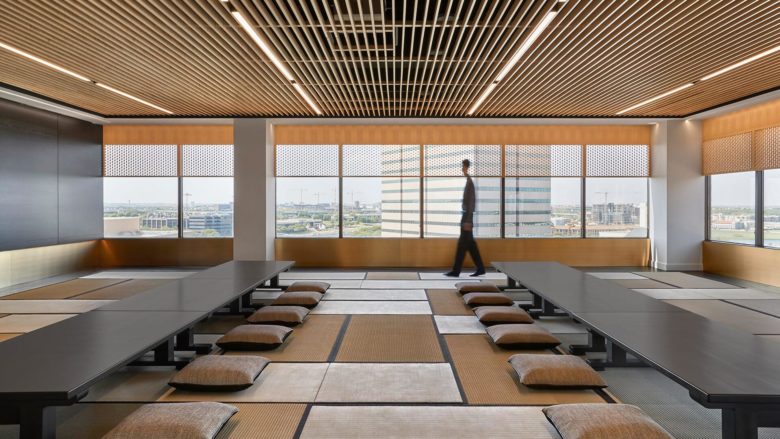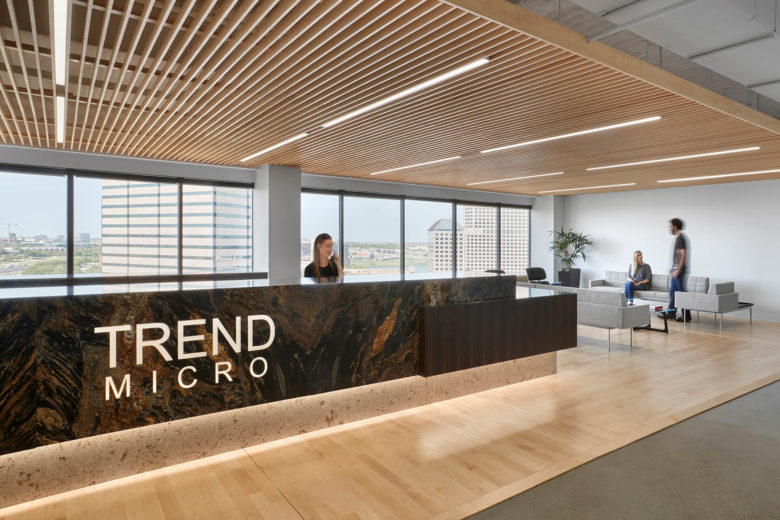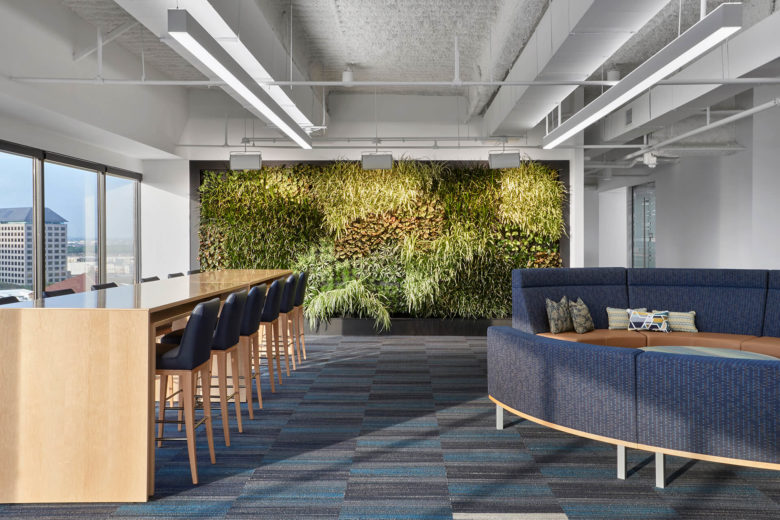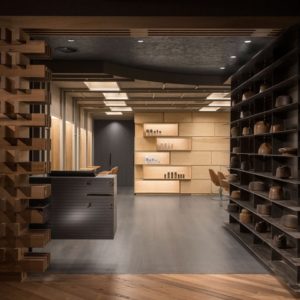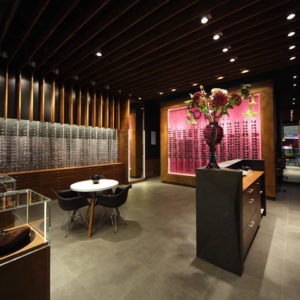

The conference room at this Trend Micro office has floor-level zabuton cushions and low tables, tatami mats as flooring and ranma-style transoms near the windows. But contrary to what these elements might suggest, the space is nowhere near Japan – it’s actually in Texas.
The newly renovated Dallas headquarters of the Tokyo-based software company honours the juggernaut’s Japanese roots through a series of design details conceived by Perkins+Will. ‘[Dallas] hosts travelling executives on a regular basis, and in many ways it’s a home base for some employees,’ explained Michael Horton, the project’s senior manager. ‘The tatami room supports this idea of connection and people, both across cultures and across offices. This approach to hospitality breaks down the barriers to create a stronger connection between leadership and staff across all levels.’
Now, as staff and visiting executives enter the reception on the thirteenth floor of the building, they’re welcomed by some familiar wood carvings. The shoe storage room features custom panels upholstered in traditionally inspired fabrics, including some with shibori techniques. The conference room features those unmistakable mats. And although some of these elements might seem overtly Nippon-based and two-thirds of the Trend Micro workforce has Asia-based heritage, the design team made sure to include this cultural mix into their execution. For example, as the office operates as the North American base, the maple wood slats are a gesture towards the company’s large Canadian presence.
As further evidence of how the company has its heritage in mind but adapts to local customs, the tatami space isn’t used solely for tea or work: the employees are free to host dinners and yoga classes, or use the facility for individual meditation. The adjacent break room is used for more American activities, such as happy hours and, because it is Texas, some catered BBQ lunches.
‘We sought to find ways of using the materials in a non-standard approach in an effort to build up the subtle gesture towards Japanese culture,’ Horton said. A sign of that is how the wooden floor at the reception is formatted so that it mimics the tatami pattern that is revealed upon entering the conference room. ‘The cultural references were meant to be subtle, but with a strong focus on hospitality and gathering and sharing.’
Designed by Perkins+Will
Photography by Garret Rowland
